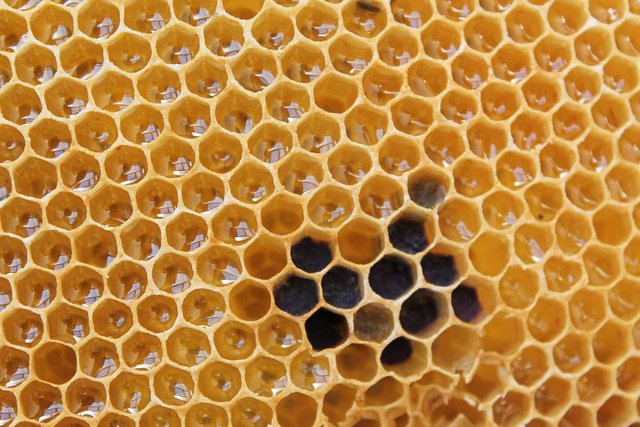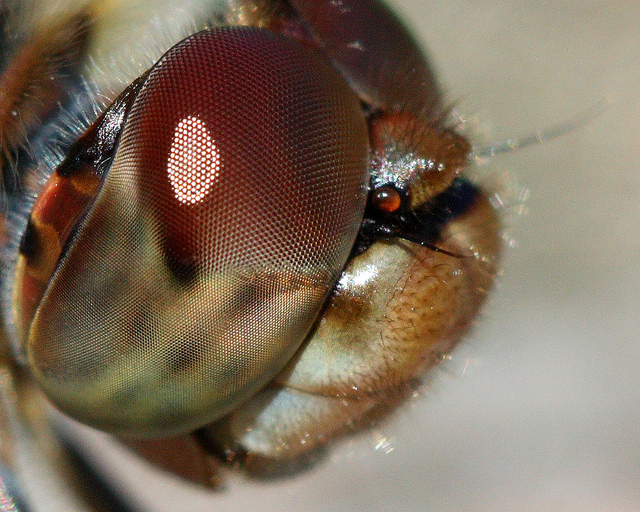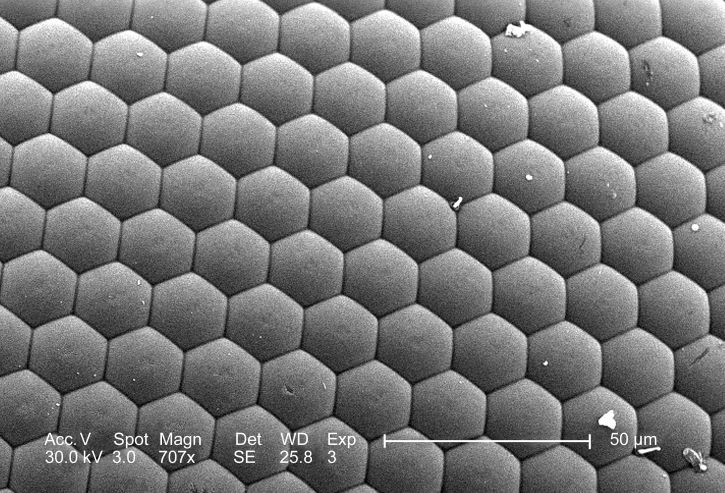Hexagon in nature: why is the honeycomb hexagonal?
The honeycomb is a perfect engineering marvel that is made up of hexagonal cells.
The bees hexagonal honeycomb cells may look pretty and easy to the eyes, but it has been a problem that had puzzled mathematicians for over a millennium. The problem is known as the hexagonal conjecture.

Image Credits Pixabay: A Honeycomb
Around 2000 years ago (36 BC), a Roman citizen, Marcus Terentius Varro, cited an answer that the most efficient way a planar surface could be in unit area size is through division into hexagons. This hypothesis is known as the honeybee conjecture.
That was one of the theory of the hexagonal structure. The other theory was of the opinion that the hexagon is the best suited shape that could support the bee's six feet.The former theory was one that was more supported by the mathematicians of the day.
The old conjecture is now a theorem as it was proved to be right in 1999 by the American mathematician, Thomas Callister Hales.
The hexagonal shape above takes the least perimeter (most efficient) method of division of a plane into unit areas.
Take a look at the circular packing; you could see that rigid circles can only cover at most 90% of the area of the plane, which leaves 10% of the plane empty. Take note of the open area marked with a red rhombus.
To tile a plane with no area wasted, we have to choose between these regular polygons: the triangle (3 sides), the square (4 sides) and the hexagon (4sides).
Since we want to achieve the least total perimeter per given area, the hexagon is the shape which satisfies this requirement.
It gives us a greater degree of filling with fewer edges.
Let us do a little geometry here to check if indeed the hexagonal shape takes the least perimeter.
We would be checking the plane division for an equilateral triangle (triangle with equal sides), the square and of course the hexagons.
Let us assume the area of the hexagon that made up each bee cell is 23.4 square millimetre, mm2.
Let us take an area of 100 x 100 mm or 10,000 square millimter, mm2.
The number of cells that could be formed in that area = 10,000/23.4 = 427.350 or approximately= 428
- Equilateral Triangle:
Since we already know A= 23.4mm2
size of each side of the equilateral triangle, a= 7.35mm2
Since there are 428 cells of equilateral triangles, each side of the triangle is shared by two. Therefore to get the total length, we will have to divide it by 2
Total length of the equalteral triangles = 3 (triangle has 3 sides) x 7.35mm * (428 cells ÷ 2) =4718.7mm or 471.87cm
Repeating the same for the squares we have:
Area of a square A= a2
where
the a= side of the equilateral triangle.
Since we already know A= 23.4mm2
a= √23.4= 4.837mm
Total lenght of squares while making allownace for two squares that share same side = 4 (sides of a square) x 4.837 x (428 ÷ 2) = 4140.472mm = 414.047cm
Area of a regular hexagon A= (3√3÷2) a2
where the a= length of the side
since A= 23.4mm, a= 3mm
Total lenght of the hexagon= 6 (sides of a hexagon) x 3mm x (428 ÷ 2) = 3852mm= 385.2cm
You can see that hexagon offers the most economic division of a planar surface area into units with respect to the length of the material required for division of the cells.
Why is this important to the bees?
Making beeswax is an "expensive" affair for the bees. For every one ounce of wax the bees produced, it will have to consume eight ounces of honey! The housing of nectar and honey is an efficient work. The cells made of beeswax is made by young bees using a high-energy substance which involves loads of nectar. Efficiency is critical as it ensures there is no waste of resources that they need to produce the structure (honeycomb).
More Hexagons in Nature
The dragonfly has no identified sense of smell or hearing. What it does depend majorly on its eyesight.
But they have extremely incredible compound eyes of all the insects. Their visual field span almost 360 degrees which makes it possible to see predator and prey coming from behind them. At least that explains why it is hard to catch one!
Each eye contain a whooping 30,000 ommatidia , singular ommatidium, hexagonal facets (lens) that collects lights from different directions. The hexagonal packing is the most efficient as it covers the eye with the highest number of facets. [Image Credits]Pixio |
The more the facet the insect has, the more the resolution (detail) the insect can see. Unlike the human vision where only one "facet" is needed, and retinal sensory cells make the final image resolution, the insects need a larger number of facets to create a final image since all that facets "compound" to produce a final image.
In the case of the bees honeycombs, some are of the opinion that the hexagonal shape was created by the bees but not on purpose. The proponent of this school of thoughts say the bees started off the cells as a circle which due to heat melts. The wax then flattens, the surface tension then helps create a perfect junction that is 120 degrees apart forming the hexagon.
What do you think?
If you write STEM (Science, Technology, Engineering, and Mathematics) related posts, consider joining #steemSTEM on discord here. If you are from Nigeria, you may want to include the #stemng tag in your post. You can visit this blog by @stemng for more details. You can also check this blog post by @steemstem here and this guidelines here for help on how to be a member of @steemstem. Please also check this blog post from @steemstem on proper use of images devoid of copyright issues here.
REFERENCES





Nature is actually a perfect engineer. Technological advancements have mainly come from studying nature. Well done !
It gets things done. That is why most engineering marvels copied nature.
It amazes me how intelligent nature is! Almost all of our modern technology was perfected by nature long before humans figured it out.
Nature is almost like the perfect architect. We just steal ideas from. Her.
I love the mathematics of nature. Perhaps humans are not the smartest in creation if it took us all that time to figure out what the bees had always known. Beautiful post.
The humans really has a lot of catching up to do when it come to beating or even getting close to nature.
"You can see that hexagon offers the most economic division of a planar surface area into units with respect to the length of the material required for division of the cells." Another fact of life that doesn't stop making me wonder.
Were there also populations of bees making squared or round honeycombs and they died out because of the lack of adaptation?
That is a perspective which I'd love to know about too.
I think nature does not do any thing by mistake. All of nature is perfect and so why can't the bees build in a hexagons?
This is most revealing especially the dragonfly's eyesight. I have definitely learnt some thing new. Thanks @greenrun
I'd agree with you that nature is the real genius here, we can only learn from it. Thank you.
I'm just thinking to myself whats the inspiration for your post. How do u choose such amazing areas like this. Its really uncommon thanks for sharing @greenrun
I just see it :)
I think nature usually finds the best way to develop itself, things like this take an incredible amount of years to finally become true.
Nature always proves its wisdom.
Speaking of honeycomb and efficiency, I can attest that the hexagonal honeycomb is the best as I used a honeycomb (artificial) in my flow visualization wind tunnel. Several literatures confirmed that they are the most suitable for my research. Although I could not use it. I had to improvise with a circular one instead due to the unavailability here in Nigeria.
For the bees, precision is one thing I have observed in the animal kingdom especially with insects. Making an hexagonal honeycomb is indeed most efficient as this will save them some effort. Nature has a lot for we humans to tap from.
Thanks @greenrun.
The flow visualisation you mentioned sounded like something you'd see in aeronautics. You studying aeronautical engineering? When you say circular one, are you saying the beehives in Nigeria are not hexagonal? The one I saw last week was hexagonal, can't recall seeing one that wasn't. Thanks.
Well, it is related to aeronautics because it cuts across aerodynamics but flow visualization is not strictly aerodynamics, instead it is an aspect of fluid dynamics in all.
I studied mechanical engineering.
And about the honeycomb I used, it is artificial. I made it myself. The natural honeycomb does not have the required strength.
Its pretty cool, isn't it, how things we tend to not really care about turns out to be so amazing? I really liked the article, especially the parts with the calculations :)
Keep up the good work!
Thank you.
Wonderful. Just wonderful, its the ability to see the hidden things and reason fast that makes one a great mathematician.. This post is insightful and brilliant. Keep steeming
If you look close enough you'd see a lot of more seemingly "hidden" details all hiding in plain sight. Thank you.
Exactly. Thats why we have people who understand things very fast and some of us just look at them like how do they do it. Makes me remember the movie hidden figure. Thanks for showing us this. I love it.